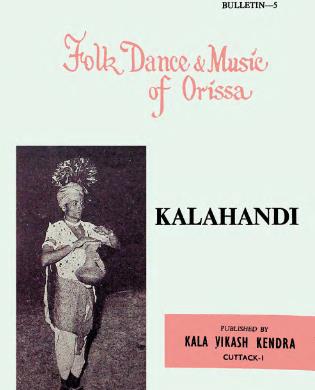Published in 1963, Folk Dance & Music of Orissa – Kalahandi by Biswanath Shaw serves as a significant academic contribution to the understanding of Odisha’s rich cultural tapestry. Shaw’s work provides an extensive analysis of folk dances and music that thrive in the Kalahandi district, offering readers a glimpse into the vibrant artistic expressions of tribal communities in this region. This book is not merely an exploration of art but also an intricate portrayal of the socio-cultural dynamics that shape the lives of the people of Odisha.
Kalahandi, known for its diverse tribal populations, boasts a variety of folk traditions that reflect the intricate relationship between the community and its environment. In his essays, Shaw meticulously documents the various forms of dance and music that characterize this region. From the pulsating rhythms of tribal drums to the delicate movements of traditional dances, Shaw captures the essence of Kalahandi’s artistic heritage.
By emphasizing the significance of these art forms, Shaw underscores how they serve as mediums for storytelling, cultural identity, and communal bonding within tribal societies. His analyses highlight how folk dances and music are not merely performances but integral components of social rituals, festivals, and daily life, thus weaving a narrative that binds the community together.
One of the prominent themes in Shaw’s work is the exploration of folklore as a repository of history and collective memory. The dances and songs of Kalahandi often narrate tales of deities, ancestors, and natural phenomena, thus preserving the tribes’ historical consciousness. Shaw’s essays delve into the symbolism and meaning behind these performances, revealing how they reflect the values, beliefs, and struggles of the people.
This connection between art and identity is especially poignant in the tribal context, where folk traditions act as a bridge between past and present. Shaw’s documentation sheds light on how these practices continue to evolve and adapt in modern times, ensuring that they remain relevant to current generations.
Shaw’s examination also extends to music, showcasing its role as a catalyst for social interaction and cultural celebration. The folk melodies of Kalahandi encapsulate the spirit of the land and its people, often featuring themes of love, harvest, and spirituality. Through his meticulous observation, Shaw highlights how music fosters a sense of belonging among community members, bringing them together in times of joy and sorrow.
The interplay between dance and music is a recurring motif in Shaw’s book, illustrating how these art forms complement each other to create a holistic cultural experience. The dynamic expressions of movement aligned with the rhythmic beats create a symphony that resonates with the soul of Odisha, inviting readers to appreciate the depth and beauty of these traditions.
Beyond the artistic analysis, Shaw’s work offers profound insights into the socio-economic contexts of the tribes. He discusses the impact of modernization and external influences on traditional practices, raising awareness of the challenges faced by these communities. By addressing issues such as migration, deforestation, and cultural dilution, Shaw encourages a dialogue about the importance of preserving these unique art forms in a rapidly changing world.
In conclusion, Folk Dance & Music of Orissa – Kalahandi by Biswanath Shaw is more than an academic treatise; it is a celebration of the cultural identity of Odisha’s tribal communities. Through rich, descriptive narratives and thoughtful analyses, Shaw invites readers to immerse themselves in the rhythmic world of Kalahandi, fostering a deeper appreciation for its artistic heritage.
This book remains a vital resource for scholars, enthusiasts, and anyone interested in the cultural richness of Odisha. As we engage with Shaw’s work, we are reminded of the importance of preserving and celebrating our folk traditions, which form the bedrock of our collective identity and sustain the cultural vibrancy of communities across the globe.
Books Info
| Books name | Folk Dance & Music Of Orissa – Kalahandi |
| Author | Biswanath Shaw |
| No Of pages | 99 |
| Publisher | Kala Vikash Kendra |
| Publication | 1963 |
| Printed At | Rashtrashikshya Co Press |
| Distributor | NA |

